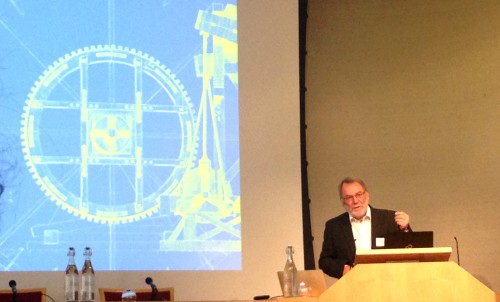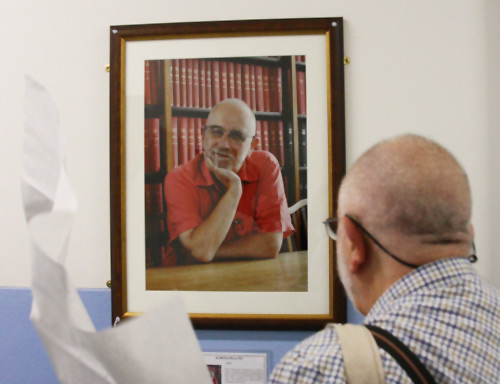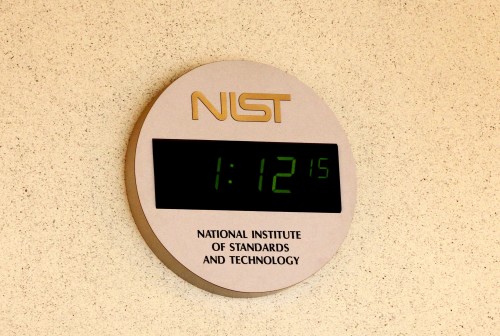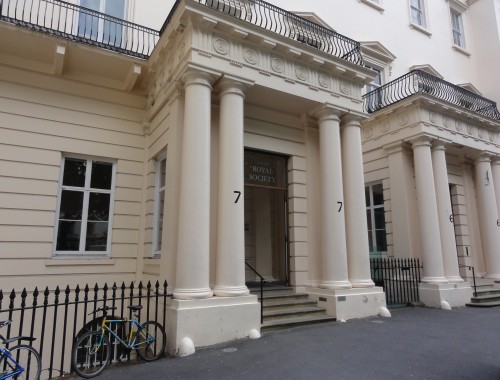Tag archives: quantum optics
How does LIGO detect gravitational waves?
By Hamish Johnston
This year’s physics Nobel prize has gone to three physicists who pioneered the LIGO observatory, which in 2015 made the first-ever detection of gravitational waves.
The LIGO detectors are famously capable of detecting changes in length smaller than one thousandth the diameter of a proton.
So how is this done?
View all posts by this author | View this author's profile
Looking toward the quantum-technology landscape of the future

Futuristic views: Peter Knight opening the conference at the Royal Society in London. (Courtesy: Tushna Commissariat)
By Tushna Commissariat
Not a week goes by here at Physics World that we don’t cover some advance in quantum mechanics – be it another step towards quantum computing or error correction, or a new type of quantum sensor, or another basic principle being verified and tested at new scales. While each advance may not always be a breakthrough, it is fair to say that the field has grown by leaps and bound in the last 20 years or so. Indeed, it has seen at least two “revolutions” since it first began and is now poised on the brink of a third, as scientific groups and companies around the world race to build the first quantum computer.
With this in mind, some of the stalwarts of the field – including Peter Knight, Ian Walmsley, Gerard Milburn, Stephen Till and Jonathan Pritchard – organized a two-day discussion meeting at the Royal Society in London, titled “Quantum technology for the 21st century“, which I decided to attend. The meeting’s main aim was to bring together academic and industry leaders “in quantum physics and engineering to identify the next generation of quantum technologies for translational development”. As Knight said during his opening speech, the time has come to “balance the massive leaps that the science has made with actual practical technology”.
View all posts by this author | View this author's profile
Michael Berry at 75

A moment to reflect – Michael Berry unveils a framed photograph of himself in the University of Bristol at an event to mark his 75th birthday. (Courtesy: Brian R Pollard)
By Matin Durrani
Anyone who gets invited to an event that’s being held on April Fools’ Day is bound to think there’s something fishy going on. But last Friday’s meeting to celebrate the 75th birthday of Bristol University physicist Michael Berry was a genuine commemoration of his career, although it did have its lighter moments.
Grandly entitled “Physics, Art, Mathematics, Science”, the meeting was intended to reflect Berry’s extensive and wide-ranging interests, which stretch from the physics of waves and quantum phenomena to optics, tidal bores and magnetic levitation. (There’s also a phenomenon called the Berry phase, although I understand Berry himself is reluctant to use that term.)
It’s difficult to summarize Berry’s many contributions to physics – he has written approaching 500 papers – so I’m going to take the easy way out and instead point you at his excellent website, where you can easily get lost down lots of entertaining and stimulating rabbit holes.
If there’s one item on his site I can recommend, it’s his description of how his work on the mathematics of magnetic levitation led him to share the 2000 IgNobel Prize for Physics with the future (genuine) Nobel laureate Andre Geim, who in 1997 levitated a frog using a powerful permanent electromagnet while at Bristol.
View all posts by this author | View this author's profile
Setting the standards for physics

Keepers of time: at the NIST campus in Gaithersburg. (Courtesy: Tushna Commissariat)
By Tushna Commissariat in New York City, US
As most of our regular blog readers will know, last week Physics World‘s Matin Durrani and I were in Baltimore attending the APS March meeting. While we spent most of the week at the conference centre, last Friday we visited the National Institute of Standards and Technology’s (NIST) Gaithersburg campus, as well as the Joint Quantum Institute (JQI), which is based at the University of Maryland. It was a jam-packed, exciting day that we spent zipping around to and from more than 10 different labs and departments, meeting people who use physics to do everything from improve the safety of body armour to redefining the kilogram.
As we saw so many interesting projects, covering them all would make for a rather long read. Instead, join me for a quick visual tour of NIST below (I will cover our JQI visit in a separate blog) to get a small taste of the physics and people involved.
A great day out in celebration of Maxwell’s equations

Pillars of light: this week’s meeting at the Royal Society focused on how Maxwell’s equations illuminate physics. (CC BY-SA 3.0 Tom Morris)
By Hamish Johnston
Earlier this week I caught the 6.30 a.m. train from Bristol to London to attend the second day of “Unifying physics and technology in light of Maxwell’s equations” at the Royal Society. It was a particularly damp and gloomy morning as I emerged from Piccadilly Circus station and tramped through St James, my sights set on the Duke of York pillar next to the Royal Society in Carlton House Terrace.
It seemed like the perfect morning to be thankful for the light described by James Clerk Maxwell’s equations, and to ponder how they have since illuminated many shadowy corners of physics.
The meeting was organized by three physicists at nearby King’s College London: biophysicist and nanotechnologist Anatoly Zayats; particle physicist John Ellis and condensed-matter physicist Roy Pike. Already, you can see the breadth of physics covered at the meeting.
View all posts by this author | View this author's profile